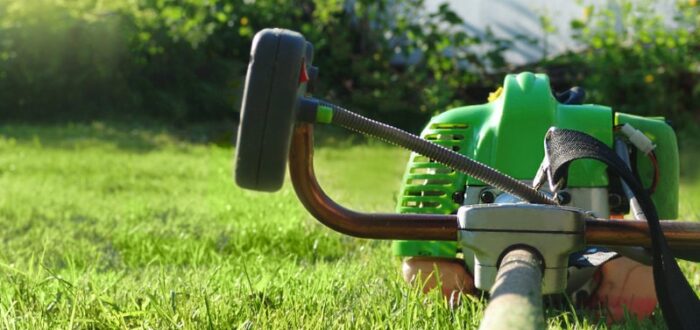Regardless of an engine’s size, its carburetor is the component responsible for mixing gas and air. In this post, we will answer the question, “How does a small engine carburetor work?” But before we discuss a carburetor’s functions, let’s take a look at the differences between a small engine carburetor and a standard engine carburetor.
Small Engine Carburetor vs. Standard Carburetor
All carburetors work the same way. A standard carburetor, or simply a “carburetor”, is designed and built to work on large engines that consume a lot of gas. A small engine carburetor is a scaled-down version of the standard model with fewer parts, and minus some whistles and bells (or secondary functions). A small engine carburetor will still provide all of the essential functions required for small engines of up to 25 horsepower.
A small engine is typically installed in smaller types of equipment used for work, such as riding mowers, tillers, and chainsaws. Small engines are available in gas and petrol models. While small-engine carburetors are similar to those used in automobiles, a small engine’s carburetor does not have an accelerator pump. Instead, small engines use a primer bulb to draw fuel into the small engine’s cylinders.
Small Engine Carburetor – Air Mixing
A small engine carburetor draws air in from the area surrounding the small engine, and mixes it with gas drawn from an attached fuel tank. The mixture is then distributed through a small tube, or “venturi”, leading to the small engine’s combustion chamber.
The small engine carburetor creates a vacuum in the small engine’s fuel tank. As gases from the tank rise into this vacuum, they compress and become warmer. This warm gas is then drawn from the small engine fuel tank through small holes, called “jets”.
Functions of the Small Engine Carburetor
A small engine carburetor’s primary functions are the following:
- Feed the fuel mixture into the combustion chamber
- Regulate the amount of fuel flowing into the engine
- Adjust the air-fuel mixture
- Regular temperature through a system called thermostat
- Implement the automatic choke
How Does a Small Engine Carburetor Work?
- The air intake system of a carburetor is the air’s entry point.
- The amount of air that goes into the carburetor is reliant on the choke’s settings. This component covers the valve. More air can enter when it’s opened wider.
- The venturi is the opening that becomes narrow when air is pushed into it.
- A vacuum is created, pulling the fuel toward a tiny fuel jet. It lets enough fuel through, making the right amount for an explosion. This process is the one that powers the engine.
- The excess gas is stored in a float bowl. The float heads to the top to cut off the fuel flowing through when this part is full.
- The gas is discharged into the chamber, and the float drops with the gas level to unblock the opening simultaneously. The fuel bowl will then fill back up.
- Gas is released quicker when the throttle valve is open. This process ensures that there is ample power to make the engine go faster.
- The idle valve is a secondary component outside the throttle valve. It functions when the engine is on idle and the throttle is closed.
Small engine carburetor maintenance tips
If small engine carburetor maintenance is not part of a small engine owner’s routine, this can stall the small engine. Here are some tips for owners of small engines to help you keep this vital component in good condition:
- Small engines with small carburetors should have their fuel filters cleaned every time they’re refilled with gasoline (or after every two small engines’ starts) to remove small particles of sediment.
- Small engines with vacuum-operated carburetors should have the air filters cleaned or replaced regularly. This will help keep small engine carburetors in good condition and prevent poor performance.
- Small engines that are operated under harsh conditions should have their fuel filters changed more often or cleaned thoroughly.
- Small engines with small carburetors should be drained, cleaned, and dried for at least six hours after each use.
- Small engines with small carburetors should be kept clean and dry to protect them from corrosion.
We’ve now answered the question, “How does a small engine carburetor work?” The next step is to ensure that this component is working well in your machine. If you want to leave your small engine carburetor matters to our experts at Greg’s Small Engine, call us today to schedule your carburetor maintenance!






















